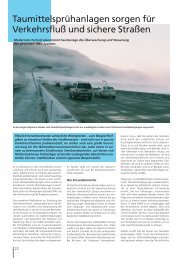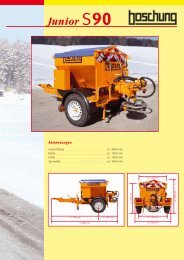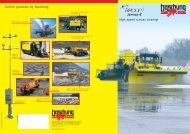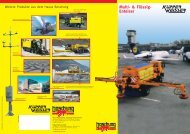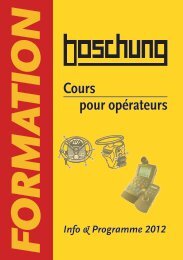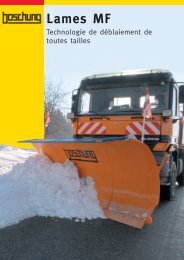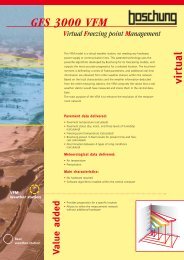Physical bases of freezing point measurement using ... - Boschung
Physical bases of freezing point measurement using ... - Boschung
Physical bases of freezing point measurement using ... - Boschung
You also want an ePaper? Increase the reach of your titles
YUMPU automatically turns print PDFs into web optimized ePapers that Google loves.
Proceedings <strong>of</strong> the 9 th SIRWEC Conference 15-17 March 1998, Luleå, Sweden 274<br />
2.1.1 Nucleation <strong>of</strong> ice<br />
Nine allotropic varieties <strong>of</strong> ice do exist, however only ice Ih exists under pressures<br />
lower than 200 MPa and temperatures greater than those <strong>of</strong> liquid air. It crystallizes in the<br />
hexagonal system (spatial group P 63/mmc) and is then the only ice that exists in the natural<br />
state.<br />
Ice may form either by the <strong>freezing</strong> <strong>of</strong> liquid water (producing for instance glazed frost)<br />
or by deposition from the vapor phase (producing for instance rime). In both cases, the<br />
initiation <strong>of</strong> the ice phase occurs by the nucleation <strong>of</strong> a small ice embryo. Under certain<br />
conditions, water can be cooled well below 0 °C and yet remains in the liquid state. Water in<br />
such a metastable state is said to be supercooled. If the nucleation <strong>of</strong> the ice phase occurs on<br />
foreign particles (impurities, dust particles, gaseous bubbles, etc.), the ice is said to form by<br />
heterogeneous nucleation. If foreign particles do not play a role in the nucleation, the ice<br />
phase must be initiated by water molecules combining together to form an ice embryo which<br />
can grow spontaneously. In this case, the ice is said to form by homogeneous nucleation. It is<br />
interesting to note that vibrations also initiate the crystallization <strong>of</strong> supercooled water. The<br />
nucleation <strong>of</strong> ice is discussed in detail in [Hobbs 1974].<br />
2.1.2 Latent heat <strong>of</strong> fusion<br />
The change in enthalpy dH associated with a change in phase <strong>of</strong> a material at constant<br />
pressure p is given by :<br />
dH = dU + pdV (1)<br />
where dU and dV are the changes in internal energy and volume <strong>of</strong> the material respectively.<br />
The latent heat <strong>of</strong> fusion Lf <strong>of</strong> ice is defined as the change in enthalpy when a unit mass <strong>of</strong> ice<br />
is converted isothermally and reversibly into liquid water. In this case, the term p dV is small<br />
compared to the other two terms in equation (1), so that Lf is equal to the change in internal<br />
energy. The latent heat <strong>of</strong> fusion <strong>of</strong> ice at 0 °C and standard atmospheric pressure is<br />
333.5 kJ/kg. For a discussion about this subject, see [Hobbs 1974].<br />
To melt ice, latent heat <strong>of</strong> fusion has to be supplied (endothermic transformation), while<br />
when water is frozen, an amount <strong>of</strong> heat equal to the latent heat <strong>of</strong> fusion is released<br />
(exothermic transformation).<br />
2.1.3 Scenario <strong>of</strong> the <strong>measurement</strong><br />
Instead <strong>of</strong> considering the cooling <strong>of</strong> pure water, let us consider first the behavior <strong>of</strong> a<br />
saline aqueous solution during cooling from an initial temperature T0, as illustrated in the<br />
figure 1. As <strong>point</strong>ed out by [Franks 1982], initially the solution supercools, until nucleation<br />
takes place at the temperature Tbc and crystal growth begins. Since the latent heat cannot be<br />
removed fast enough, the temperature rises to the melting temperature Tm. In the vicinity <strong>of</strong><br />
the growing ice crystals, the concentration <strong>of</strong> salt increases, reducing the local Tm, and




